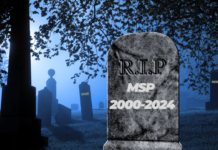Of course, we’ll never know what Leonardo would have thought of 21st-century computer software. But Microsoft Corp. hopes modern PC users, at least, will be impressed by a free online program from the British Library that lets people page virtually through two of his most significant notebooks.
The British Library program, called Turning the Pages 2.0, uses new Windows graphics technologies to present digital scans of the 500-year-old notebooks on the screen almost as if they were real.
Turn the Pages 2.0 allows users to virtually flip through the pages of Leonardo da Vinci’s notebooks.
Microsoft Chairman Bill Gates owns one of them — the Codex Leicester, purchased in 1994 for $30.8 million. The other, the Codex Arundel, is in the British Library’s holdings.
Library officials say the program is notable because it brings together the notebooks for the first time in modern history — albeit in virtual form — for researchers and the general public to make direct comparisons between them.
Given the rare and fragile nature of the notebooks, access to them is ordinarily limited.
Not so in the virtual world. In the British Library program, people can rotate and move the notebooks on the screen, and turn on a magnifying glass to see the text and schematics close up. The pages turn as they would in real life, lifting and curling as the computer casts dynamically rendered light and shadows upon them.
The documents were handwritten by Leonardo primarily in Italian, in “mirror script,” from right to left. However, the program also offers expert commentary explaining the passages.
However, some people trying to use the program will encounter technological hurdles: The program works only in Microsoft’s Internet Explorer.
It requires underlying technology built into Windows Vista, or available as a downloadable add-on for Windows XP. And people trying to run the program on hardware more than two years old might be out of luck: Among other things, it requires a full gigabyte of memory.
The British Library had previously made the Codex Arundel and other documents available for viewing in a more simple online interface that’s still available for viewing on less-capable machines.
Microsoft and the British Library launched the new version of the Turning the Pages program two weeks ago. But it didn’t get a lot of attention amid all the hubbub over the debut of Windows Vista
.
Unveiling the updated Turning the Pages program, British Library Chief Executive Lynne Brindley described the moment as “the electronic reunification of these documents — both of these notebooks for the very first time in 500 years.”
Microsoft also sees the British Library program as a chance to showcase some of Windows Vista’s improvements. It uses what’s known as the Windows Presentation Foundation, the new operating system’s underlying graphics engine, to make viewing Leonardo’s notebooks and other documents more realistic.
The program makes it possible “to look at a book and literally feel like you’re experiencing the pages,” said Cynthia Crossley, director of Microsoft’s PC Windows group in the U.K.
The Codex Leicester, on virtual loan from Gates, is expected to be available for viewing for at least six months through the program.
At the unveiling in London two weeks ago, Gates explained that he was “amazed” by Leonardo “because he personally worked out science on his own, and he understood things that no other scientist of that time did,” according to a transcript of the event.
Gates also recalled what happened when he told his wife, Melinda, that he was planning to buy the notebook: “She didn’t think that was a very big deal. I said, ‘No, this is a pretty special notebook.’ “












